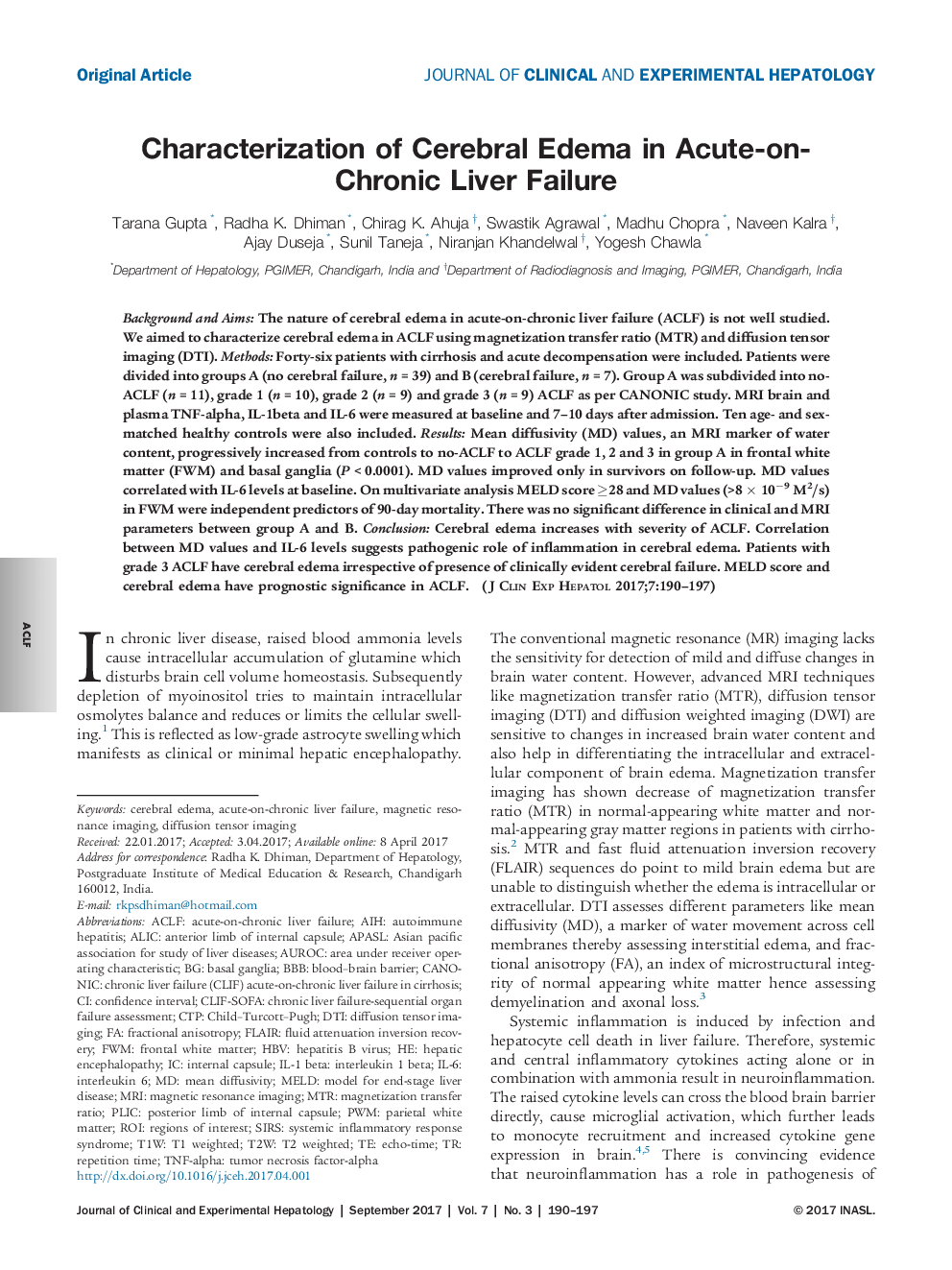| Article ID | Journal | Published Year | Pages | File Type |
|---|---|---|---|---|
| 5664842 | Journal of Clinical and Experimental Hepatology | 2017 | 8 Pages |
Background and AimsThe nature of cerebral edema in acute-on-chronic liver failure (ACLF) is not well studied. We aimed to characterize cerebral edema in ACLF using magnetization transfer ratio (MTR) and diffusion tensor imaging (DTI).MethodsForty-six patients with cirrhosis and acute decompensation were included. Patients were divided into groups A (no cerebral failure, n = 39) and B (cerebral failure, n = 7). Group A was subdivided into no-ACLF (n = 11), grade 1 (n = 10), grade 2 (n = 9) and grade 3 (n = 9) ACLF as per CANONIC study. MRI brain and plasma TNF-alpha, IL-1beta and IL-6 were measured at baseline and 7-10 days after admission. Ten age- and sex-matched healthy controls were also included.ResultsMean diffusivity (MD) values, an MRI marker of water content, progressively increased from controls to no-ACLF to ACLF grade 1, 2 and 3 in group A in frontal white matter (FWM) and basal ganglia (P < 0.0001). MD values improved only in survivors on follow-up. MD values correlated with IL-6 levels at baseline. On multivariate analysis MELD score â¥28 and MD values (>8 Ã 10â9 M2/s) in FWM were independent predictors of 90-day mortality. There was no significant difference in clinical and MRI parameters between group A and B.ConclusionCerebral edema increases with severity of ACLF. Correlation between MD values and IL-6 levels suggests pathogenic role of inflammation in cerebral edema. Patients with grade 3 ACLF have cerebral edema irrespective of presence of clinically evident cerebral failure. MELD score and cerebral edema have prognostic significance in ACLF.
